#20th june 1897
Explore tagged Tumblr posts
Text

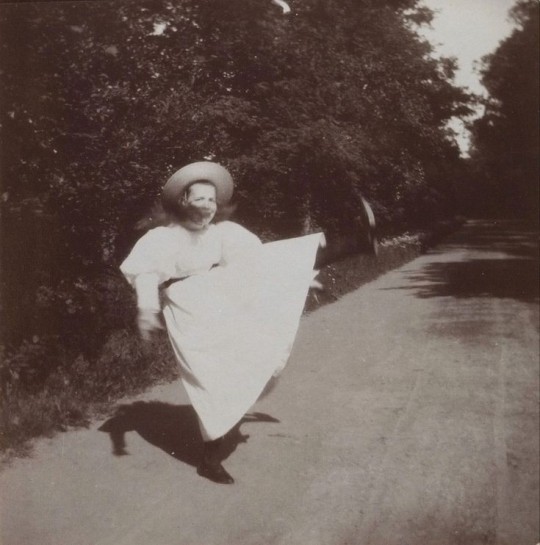
Grand Duchess Olga Alexandrovna Romanova being very cute and goofy around in Alexandria, 20th June, 1897. ✨✨
#romanov#romanovs#olga alexandrovna#russian imperial family#romanov photos#royals being funny#old royal photos#vintage photography#1890s#1897#20th June#june#20th june 1897#alexandria#late 19th century#200697
75 notes
·
View notes
Text
The use of English shorthand and typewriters expanded towards the end of the 19th century in clerical work in the major cities of the subcontinent. The use of shorthand in Indian languages, however, developed not in the context of office work but to meet the requirements of the new public sphere, particularly the quick notation of public speeches for reporting in newspapers. This led to the invention of new speed scripts, atitvarene lihiṇyāchī paddhatī (very speedy writing) or laghulekhan (shorthand) in Marathi, which relied heavily on Pitman and Munson’s English shorthand. Arguably the first use was in 1874 by RB Gunjikar [...]. Gajananbhau Vaijya, an English shorthand writer and reporter with the Indian Statesman, invented another speed script expressly for the quick notation of speeches [...]. Notably, Indian-language shorthand remained in the sphere of handwriting, as typewriters for non-Latin scripts did not become widespread in the subcontinent until the mid 20th century. [...]
[I]t is actually Bhujangrao Mankar, inventor of a third shorthand script with the book Laghulekhankalā (1897), who announced himself on the title page as the creator of Marathi and Gujarati shorthand. Mankar was a well-known English shorthand reporter for the press and the Criminal Investigation Department (CID) in Bombay for all manner of political meetings in the early 20th century. [...]
---
As Bernard Bate noted, Tamil shorthand came into its own when the colonial government attempted to acquire written transcripts of possibly seditious speeches during the Swadeshi movement.
In Bombay, too, shorthand found widespread application in CID surveillance with the growth in nationalist meetings and activity in the 1920s. Sub-inspectors could learn Marathi shorthand as an optional subject in the Central Police Training School; the usual practice was to pass a test in the office and regularly test for speed.
In the trial of the Ali brothers in Karachi following the Khilafat movement, speeches by Mohamed Ali and Shaukat Ali were entered as evidence of their seditious activity.
Similarly, charges against Communist leaders SA Dange, RS Nimbkar, and others in the Meerut conspiracy case (1929–33) were also based on their public speeches.
The cross-examination of witnesses turned on the accuracy of the transcripts and the methods used to obtain them and provides a rich window into the work of memory, notation, and translation involved in producing a speedy verbatim transcript of a public speech, and the issues of legibility, authenticity, and transparency that linked scribe, script, and language to state surveillance.
---
Police reporters usually translated the shorthand transcripts of speeches in various languages into English longhand as soon as possible. In Karachi the Ali brothers’ Urdu speeches were recorded in Urdu shorthand. In Belgaum in June 1921, however, sub-inspectors of the Pune CID took down their Urdu and English speeches in Marathi shorthand. During a meeting in Bagalkot, also in northern Karnataka, Shaukat Ali’s speech in Urdu was orally translated sentence by sentence into Kannada as he spoke [...]. There was thus much processing of sound, meaning, and sign across languages, scripts, memories, and individuals, all at high speed. [...] The inspector [...] Deshpande mentioned a critical aspect of Pitman-based shorthand writing: since the signs matched specific sounds, he did not pay much attention to the content of the speech; he just noted down the sounds as best he could, even if he didn’t know the meanings of words. Gaps between sounds and meaning, it would appear, were filled in either during transcription through memory recall or by the CID itself. [...] These practices of notation, translation, and judicial discourse grappled with a spectrum of textual reproduction of oral utterances, from gist to verbatim.
---
Text by: Prachi Deshpande. Scripts of Power: Writing, Language Practices, and Cultural History in Western India. 2023. [Bold emphasis and some paragraph breaks/contractions added by me.]
78 notes
·
View notes
Text

Empress Alexandra Feodorovna and Dowager Empress Maria Feodorovna in Alexandria, June 20th 1897
Photo from Xenia’s 1897 Album
2 notes
·
View notes
Text
𝙑𝙞𝙣𝙘𝙚𝙣𝙩 𝙂𝙧𝙖𝙮
"𝙇𝙚𝙖𝙙𝙚𝙧𝙨 𝙧𝙖𝙧𝙚𝙡𝙮 𝙝𝙖𝙫𝙚 𝙩𝙞𝙢𝙚 𝙩𝙤 𝙩𝙧𝙪𝙡𝙮 𝙢𝙤𝙪𝙧𝙣. 𝙒𝙚 𝙖𝙧𝙚 𝙦𝙪𝙞𝙘𝙠 𝙩𝙤 𝙘𝙝𝙖𝙣𝙜𝙚 𝙗𝙡𝙖𝙘𝙠 𝙩𝙤 𝙜𝙤𝙡𝙙, 𝙛𝙤𝙧 𝙩𝙝𝙚 𝙨𝙖𝙠𝙚 𝙤𝙛 𝙡𝙚𝙜𝙖𝙘𝙮."

BASICS
Name: Vincent Joseph Gray
Birthday: 23rd of October, 1858
Zodiac sign: Scorpio
Weight: 85kg
Height: 1.88m
Religion: Agnostic
Eye colour: Black
Hair colour: Brown
Faceclaim: David Oakes

FAMILY
Mother: Demelza Elisabeth Gray, neé Fawley

Demelza was a beautiful pureblood woman from the Fawley family, who, per tradition, was sorted into Hufflepuff. She was nearly sorted into Slytherin, though, for her cunning and intelligence matched her Slytherin peers. She met Ernst Gray during a ball that was all pure-blooded and the two hit it off instantly. After a year of courtship, they married in a December morning in 1857 and had another son, Matthew. She was quite disappointed and unimpressed with Victoria, but loved Primrose and lived to see her married to a fellow pureblooded man, and thus her fortune went to her when she passed in December 1900 instead of her son, Vincent.
Father: Ernst Augustus Gray

A handsome, rich but minor pureblooded man of high standing, he was one of the hottest bachelors of the day, for many pureblooded man of higher standing had been married when they were infants. He met the beautiful and intelligent Demelza Fawley and fell in love with her. He courted her for a year before he proposed to her in the 1st of January, 1857. She accepted, and within they were married and expecting their first child, Vincent. Ernst was dissappointed when his son married the aristocratic muggleborn Victoria, but spoiled Primrose rotten. It was she who got both their fortunes, making her the second richest viscountess of Winbourne. Ernst died in 1897, leaving Demelza a wealthy widow.
Other relatives: Matthew Eustace Gray

Handsome, charismatic and with a charm, after Vincent gave up his legacy to commit to his wife’s estate, Matt was made heir instead and was the one to rescue the well-thought bride for Vincent from the Avery family. He earned a seat into the Ministry of Magic and lived the typical pureblooded life.
Friends: TBD
Significant Other: Victoria Augusta Gray

Vincent and Victoria went to Hogwarts together. He didn’t at first believe she was from a high-standing aristocratic family until he asked her himself, and from then on, he tried to impress her, though often failed.
One afternoon, during a meal with his friends in Hogsmeade, he boasted that Victoria could never best him during a match, and Victoria calmly got up and stupefied him against the wall and told him loudly “A fool plays the game to win. A wise one plays their opponent.” She then whispered to him “Do not doubt my prowess or skill. I am match for any man like yourself, Mr. Gray.” He fell in love with her right there. Silly, he knew, but he fell for her nevertheless. By the time he learned why she remained in Hogwarts, he declared his love for her and boldly went to ask permission to her parents to marry her without his own parents’ knowledge. Seeking an escape from the man, they accepted, wanting her married before her 20th birthday.
They married in June 1877, and both had a close and loving relationship. Sadly, Victoria miscarried a child early into 1879. In 1881, they had their first and only child, Primrose. By law, she got his name, and wasn’t expected as the heir. They lost another four children of miscarriages and the doctor told off Victoria on getting pregnant no more, or else it’d kill her. Though Vincent was afraid of getting her pregnant again and killing her, they got up to stuff and remained close until 1898. Victoria fell ill with cancer and wouldn’t survive for long. In August 1899, Victoria passed away, and Vincent was devastated. He went on a trip for a secret business he never revealed and found out too late that the Duke of Buckingham had seized Winbourne and Alina hostage and would marry her by any means unless Primrose, who was just 17, surrendered to him and marry him in Alina’s stead. She did neither, and after a night’s ride in a stolen Abraxan, got Winbourne back with the help of the village with a motivational speech in which she said “I am aware that I am young and feeble still, but my heart and will are a Viscount’s one, and most certainly of a Viscount of Winbourne. I’ll have you know I’ll happily die before I am submitted to a tyrant’s will.” She duelled him and won, which made him extremely proud of his little girl. This action would always be remembered by everybody for years to come.
The next two decades, Vincent started to sort out his affairs and spending time with his grandchildren, a help which was appreciated by his daughter. He adored and spoiled all of them, and the fortune he had ammassed in Victoria’s name went to his two eldest, Vincent Jr (who was named after him) and Alexandra, meanwhile the younger four sisters got jewels, clothes and dowries on his account and some hidden fortune in case Winbourne was in red numbers. Vincent joined his wife in eternal peace in 1923, having outlived her by twenty-four years.
PERSONALITY
Overall personality: Cunning, intelligent, ambitious and with a boldness, Vincent is cold and unafraid of getting his way, but he is firmly loyal and a romantic, passionate man who almost never lets his heart do the talking
Positive traits: Cunning, intelligent and ambitious
Negative traits: A bit bold, cold and secretive
Guilty pleasure: Cuban cigars
HOMETOWN
Vincent grew in near luxury in Gray Manor, receiving an exquisite pureblood education, though he never truly bought most of these. He lived with his parents and younger brother Matt, whom he always knew would go far in life.
He was engaged to Marianne Avery, but he had little time for her, always training to be a Cursebreaker and always be as far away from his family as he could, to no avail. He soon fell for Victoria and broke off the engagement to marry Victoria instead, and to avoid a family feud with the powerful Averies, Matt promised to marry her himself with an unbreakable vow, and the two seemed happy. He left home the moment he declared his intentions to marry Victoria.
BACKSTORY
Vincent Joseph Gray was born on the 23rd of October, 1858, to Demelza and Ernst Gray, two pureblooded families. He grew up in the lap of luxury, though he never truly bought such lifestyle and ideals and preferred to open his windows to... somewhere else.
In his late years in Hogwarts, he fell in love with Lady Victoria Gray of House Somerset after she stupefied him for boasting that she’d never best him in a duel. He broke off his engagement to Marianne Avery and asked Vicky’s parents to marry her, and they accepted. They married in 1877 and had a daughter, Primrose. After several miscarriages throughout the 1880′s decade, in 1890, they started to prepare her to inherit the estate. To avoid her probable unhappiness in a terrible family that was closely related to the royal family, he plotted his daughter’s engagement with the infamous ‘ward’ of Lord Paul Carlisle, William Devlin, someone who wouldn’t have any chance to annex anything into the lands of the viscount, for he was not the heir, despite him knowing well that he was his firstborn son.
His daughter received her Hogwarts letter, and the rest, is history.
MISC
Vincent is a well-read, intelligent and astute man who always gets his way. His daughter would inherit this from him
He soon made friends with his brother-in-law George, and advised him not to fight the Anglo-Afghan war, but it went unheard. Months later, the fateful letter that he had perished in battle would come, changing Winbourne’s history forever.
He was a mathematics mastermind and enriched Winbourne with his own fortune
He spoiled Primrose rotten and made sure she had the best tutors during her childhood
He was the one who corresponded the most with during her time at Hogwarts
Every birthday, anniversary and deathdate of Victoria, he’d visit her tomb and leave her her favourite flowers
His final words were “I am ready, dearest Vicky.”
#hp victorian era#side character#character profile#vincent gray#hp legacy era#victoria somerset#victoria x vincent#somerset family
16 notes
·
View notes
Text
The Electrifying History of CESC: The Legacy of Excellence
Kolkata, a city steeped in history and culture, has long been a leader in India’s industrial and technological progress. A key part of this development is the Calcutta Electric Supply Corporation (CESC), which has been crucial in lighting up the city and powering its growth. Let's explore the intriguing history of CESC and its journey over the years.
The Arrival of Electricity
The story began on 24th July 1879, with the first demonstration of electric light by P W Fleury & Co. This was followed by another significant demonstration by Dey Sil & Co on 30th June 1881. These events marked the start of a new era in Kolkata, introducing the citizens to the wonders of electricity.
The Year 1899: A Landmark Moment
The year 1899 was a milestone for both CESC and Kolkata. In April of that year, CESC commissioned its first thermal power plant, laying the foundation of Kolkata's infrastructure. This was not just a technical achievement but also a cultural moment, as Kolkata was then the capital of India and the second city of the British Empire.
Legislation and Expansion
The story of CESC is also about evolving legislative frameworks. The Calcutta Electric Lighting Act was passed in 1895, granting CESC its first licence to light up the city. This initial licence covered an area of 5.64 square miles, a figure that has since grown significantly to cover 567 sq km today.
Early Years and Rapid Growth
On 7th January 1897, Kilburn & Co secured the electric lighting licence, and soon after, the company was renamed The Calcutta Electric Supply Corporation Limited. By 1898, CESC was supplying electricity to prominent establishments like the Bank of Bengal and The Bengal Club.
Lighting Up the Streets and Homes
CESC’s efforts soon illuminated the streets of Kolkata. Harrison Road (now Mahatma Gandhi Road) was among the first streets to be lit up by electricity between 1889 and 1892. This era also saw the introduction of electric fans, replacing the traditional hand-pulled punkahs, which greatly changed everyday life in Kolkata.
Modernisation and Growth
The expansion and modernisation of CESC continued through the 20th century. Notable developments included the electrification of Calcutta Tramways in 1902, transitioning from horse-drawn carriages to electric trams—a technological upgrade that also improved public health.
The Southern Generating Station, commissioned in the early 1990s, finally ended the load-shedding that had troubled the city since the 1960s, ushering in a new era of reliable electricity supply.
CESC Today
Today, CESC serves over 2.8 million consumers, a significant leap from the 6,000 consumers in 1912. The company has grown alongside the city, contributing not only to its infrastructure but also to its socio-economic development.
Reflections
The history of CESC is more than just a company story; it’s a reflection of Kolkata’s journey into modernity, mirroring the city’s growth and challenges. As we look back at the bright path CESC has travelled, it’s clear that the company has not only lit up homes but also lives, fostering growth and innovation in one of India’s most historic cities.
As Kolkata continues to evolve, CESC remains a symbol of progress, committed to sustainability and excellence. The legacy of those early days of electricity continues to inspire a brighter, more sustainable future.
0 notes
Text














Color TV Day
Color TV Day is celebrated on June 25 every year. Watching color television is something most of us take for granted these days, but this wasn’t always the case. The first television programs we saw were in black and white, and that was the only way we could watch them. It wasn’t until the middle of the 20th century that color television watching became the standard in the United States. It is only fair that color televisions should be celebrated on their unique day, which is Color TV Day. This event commemorates the birth of color television and the role it has played in our culture since its inception.
History of Color TV Day
The development of fully colored television systems changed the face of television forever, and the world of television as we know it would be considerably different. Even though they were far more challenging to manufacture, numerous innovators across the globe worked hard to develop such a gadget that would allow millions of people to see wireless broadcasts that were replicated in vivid color.
Such attempts began in the experimental stage during the late 19th century. The first prototype appeared in 1928, public broadcasting in 1940, and black and white transmissions’ extinction began in the mid-70s. Following the tremendous success of black and white television broadcasting in the United States, CBS researchers, under the direction of Peter Goldmark, approved a heavy and massive mechanical television system in 1950, with the first color transmission taking place in June of the following year. Because of the expensive cost of color television sets and the limited quantity of color television material available, black and white television sets remained popular until the mid-1960s, even though many American television stations began broadcasting in color as early as 1954.
Color television quickly gained popularity in the United States and eventually expanded around the globe. While Europe awaited the solidification of American standards and a solution to their early technological challenges, they introduced the color PAL format in 1967, which was eventually adopted worldwide. It wasn’t until 1972 that sales of color television sets in the United States overtook black and white television sets for the first time.
Color TV Day timeline
1876 George Carey Has a Vision for Television
Carey, a Boston civil servant, envisions television systems, submitting plans for a selenium camera that will allow people to “see by electricity.”
1897 Karl Ferdinand Braun
Braun, a German scientist, is credited with creating the cathode ray oscilloscope, which serves as a predecessor of the television image tube.
1907 Experimental Television System
Rosing develops a practical television system that employs C.R.T. and mechanical scanning technology.
1953 Experiments With Color Television
The RCA Corporation makes television history by putting their revolutionary color system on the air during an edition of NBC's “Colgate Comedy Hour.”
Color TV Day FAQs
Can I still buy a black-and-white T.V.?
It is no longer possible to buy a new black-and-white set, though many are still offered for sale on sites such as Gumtree and eBay.
Do I require a television license?
To view or record programs as they are broadcast on television and on any channel, you must have a T.V. license, according to the legislation.
What was the first color and sound movie?
Without a doubt, most movie fans are aware that Al Jolson’s “The Jazz Singer” was the first ‘talkie.’ The first color film, on the other hand, is a little more obscure. “The Wizard of Oz” and “Gone With the Wind,” both released in 1939, are the most well-known color films.
Color TV Day Activities
Watch movies
Watch some great black-and-white films
Share on social media
Spend the day watching a movie marathon or a T.V. series. Appreciate the vivid color display.
View some early black-and-white television movies. This is a great way to remember how far television has advanced.
Share information about the day on social media. Use the hashtag #ColorTVDay.
5 Fun Facts About The Television
The first color T.V. was expensive
The first color T.V. show
The first live color T.V. broadcast
The production of color T.V.s was halted
The first color cartoon programs
The model was an RCA set with a 15-inch screen, which sold for $1 — the equivalent of $7,850 today.
CBS produced a television show called “Premiere” in 1951 that is widely considered the first color television transmission.
On New Year's Day 1954, the first live broadcast on national T.V. was “Living Color” — it covered the "Tournament of Roses Parade" in Pasadena, California
The manufacture of color televisions was halted during the Korean Battle due to a scarcity of metals required for the war, which were also needed to assemble color televisions.
"The Flintstones" and "The Jetsons" were the first cartoon series to be screened in color in the autumn of 1962.
Why We Love Color TV Day
T.V. is a terrific way to pass the time
Knowledge
Family cohesion
Nothing beats the escapism that a good T.V. show can provide. When you're irritated, upset, or in a bad mood, T.V. might offer you just the right amount of diversion to temporarily forget about your issues.
Television is a great way to learn new things in various industries. Educational presentations, creative shows, and competitive events provide a lot of knowledge about education and technology.
Whether you believe it or not, television is the one place where all the family members can sit together. It brings families together!
Source
#Bellagio Hotel & Resort#L‘ Hotel#Montréal#Loews Miami Beach Hotel#travel#Sofitel Philadelphia#Le Saint Pierre Auberge Distinctive#Québec#Canada#hotel room#AirBnB#MS Allure of the Seas#Germany#architecture#interior#vacation#tourism#tv screen#Color TV Day#25 June#ColorTvDay#engineering#technology#original photography#USA#Sweden#Graceland
0 notes
Text
A real diamond in the rough
By Jonathan Monfiletto

When I wrote about the Newark Garden Colony – also known as the Penn Yan Colony – also called the Colony Home or Colony House, whose residents – dubbed colony girls – resided for nearly 30 years in the house at 324 North Ave. in Penn Yan, I mentioned in passing Baron von Lingke as “an interesting character in himself.” Von Lingke and his family lived in the home on North Avenue until close to the turn of the 20th century, and I mentioned him in passing because my research into the Colony Home also mentioned him only in passing.
Yet, while Baron von Lingke – his real first name was Oscar; Baron was his title, either actual or self-proclaimed – was indeed an interesting character in local history, the digitized newspaper collection of the Yates County History Center reveals much more than a passing mention of this man and shows the several ways in which this character is interesting. He lived in Penn Yan just a brief time, but he nevertheless made an impact that is still felt today.
Von Lingke apparently lived in Penn Yan in two different stints and seemingly in two different lifetimes. In the early 1880s, he resided as a musical instructor and performer, hosting concerts with his students at various locations in the village. In February 1883, “Prof. von Lingke,” as he was deemed by the newspapers, and his students held a concert at the home of Farley Holmes, located today at 303 Main St. In October 1884, the professor and his pupils hosted a performance at a location listed as the Opera House – likely Cornwell’s Opera House, which is nowadays the site of Long’s Cards & Books.
While we have a Penn Yan village directory covering 1879-1881, the next directory in succession covers 1889. Unfortunately, von Lingke is listed in neither directory, so it is difficult to pinpoint where he lived during his first iteration in Penn Yan. However, a May 1931 reminiscence by C.T. Burrill states von Lingke “had a studio in a double house where the Delos Hollowell residence is now located,” listed as 219 Main St. by modern-day addresses, so this may have been where he lived during that time. Burrill also notes von Lingke “went to Germany to secure his title and came back with his wife,” Lina.
Having been born in Germany in 1826, von Linke came to Penn Yan in 1878, according to former Yates County Historian Frank Swann. It is unclear when he returned to Germany, but it seems he and his family made their way back to Penn Yan by 1894. An item in the Yates County Chronicle of March 14, 1894 states: “Baron Oscar von Lingke, wife, family and maid are stopping at the Benham House.” A week later, “Baron Oscar von Lingke, wife, and children have taken up their residence in town.” Again, the location of this residence is unclear. According to Swann, von Lingke took possession of the North Avenue home from George W. Hobart on April 1, 1898, but an item in the Penn Yan Express of June 7, 1899 notes “a few years ago” von Lingke contracted with Hobart to purchase the property.
In June 1894, von Lingke and his wife welcomed a son, but the baby died a little more than 3 months later. After that point, the newspapers report the trips von Lingke took back and forth between Penn Yan and Germany. During one of those trips in 1895, von Lingke apparently inherited a baronial estate in his homeland through the death of his only brother, who seemingly left no other heirs. The estate was worth $100,000 (a little more than $3.7 million in modern money), and von Lingke traveled to Germany to look after his affairs and earn his title.
During another return from Germany, on April 23, 1897, von Lingke was charged with smuggling after failing to declare to customs officials some jewelry he claimed to have brought home for his wife. His pockets contained a diamond brooch, a pair of diamond and pearl earrings, another diamond brooch, and a diamond necklace. The jewels were worth about $2,500 (almost $93,000 in today’s money) altogether. He posted $1,000 bail and later settled the case with a $500 fine.
About a year and a half later, on September 23, 1898, von Lingke died at age 72 of complications from diabetes. He was survived by his wife and two daughters, and he was buried in Lakeview Cemetery along with his infant son. Following his death, Lina and the girls sailed for Germany at first to settle her husband’s affairs there and then to relocate permanently in her home country. After settling her husband’s estate in Penn Yan, Lina and her daughters returned to Germany to stay in June 1899.
The case of the alleged jewel smuggling was apparently not settled yet, however. According to the Express of September 27, 1899, a jury met to decide the fate of the jewels that von Linke had brought back from Germany without declaring but that had never been returned to him or his family. According to that article, the contents included a diamond ring, two brooches, a gold watch, a bracelet, and other jewelry. Lina stated she would like the jewelry returned to her, applied to the U.S. government for them, and offered to pay the duty on them.
The question before the jury was whether von Lingke intended to defraud the government with his initial act, and the jury decided there was indeed intent to defraud on von Lingke’s part. Thus, the jewelry became property of the U.S. government and sold by the U.S. Marshals. By the time of their sale on May 29, 1900, the jewels were valued at $3,000 and contained – a changing list – one diamond and pearl bracelet, one diamond and pearl brooch with pendant, one pair of diamond and pearl earrings, and one diamond brooch. It is unclear who bought the jewelry, how much they paid for the jewelry, and where the jewelry is now.
#historyblog#history#museum#archives#american history#us history#local history#newyork#yatescounty#pennyan#baronvonlingke#oscarvonlingke#linavonlingke#vonlingkefamily#vonlingke#germany#unitedstates#jewelry#smuggling#music
0 notes
Text
On this day in Wikipedia: Sunday, 20th August
Welcome, Benvenuta, שלום, Willkommen 🤗 What does @Wikipedia say about 20th August through the years 🏛️📜🗓️?

20th August 2021 🗓️ : Death - Igor Vovkovinskiy Igor Vovkovinskiy, Ukrainian-American law student and actor, American tallest person (b. 1982) "Igor Vovkovinskiy (Ukrainian: Ігор Вовковинський, romanized: Ihor Vovkovynskyj; September 18, 1982 – August 20, 2021), also known as Igor Ladan, was a Ukrainian-American law student, actor and tallest living person in the United States, at 7 feet 8+1⁄3 inches (234.5 cm), briefly taking the record..."

Image licensed under CC BY-SA 3.0? by Pkantz
20th August 2018 🗓️ : Death - Jennifer Ramírez Rivero Jennifer Ramírez Rivero, Venezuelan model (b. 1978) "Jennifer Ramírez Rivero (31 August 1978 – 20 August 2018) was a Venezuelan model and owner of the clothing and accessories brands Mac River and Jen River. She was murdered in 2018 in Cúcuta, Colombia...."
20th August 2013 🗓️ : Death - Don Hassler Don Hassler, American saxophonist and composer (b. 1929) "Don Hassler (June 6, 1929 – August 20, 2013) was an American composer, musician, and A&R representative. He is known for his membership and performances in jazz bands and symphonic orchestras, in which he played the saxophone and bassoon. He also served in military bands for seventeen years,..."
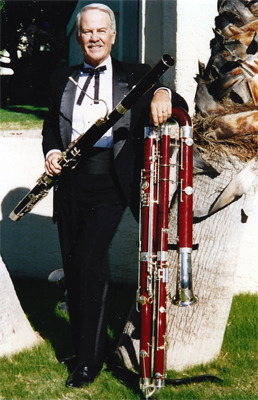
Image licensed under CC BY-SA 3.0? by Paula Hassler, photographer
20th August 1973 🗓️ : Birth - Todd Helton Todd Helton, American baseball player "Todd Lynn Helton (born August 20, 1973) is an American former professional baseball first baseman who played his entire 17-year career for the Colorado Rockies of Major League Baseball (MLB). A five-time All-Star, four-time Silver Slugger, and three-time Gold Glove Award winner, Helton holds the..."

Image licensed under CC BY-SA 2.0? by Keith Allison on Flickr (Original version) UCinternational (Crop)
20th August 1923 🗓️ : Birth - Jim Reeves Jim Reeves, American singer-songwriter (d. 1964) "James Travis Reeves (August 20, 1923 – July 31, 1964) was an American country and popular music singer and songwriter. With records charting from the 1950s to the 1980s, he became well known as a practitioner of the Nashville Sound. Known as "Gentleman Jim", his songs continued to chart for years..."

Image by RCA Records
20th August 1823 🗓️ : Death - Pope Pius VII Pope Pius VII (b. 1740) "Pope Pius VII (Italian: Pio VII; born Barnaba Niccolò Maria Luigi Chiaramonti; 14 August 1742 – 20 August 1823) was head of the Catholic Church and ruler of the Papal States from 14 March 1800 to his death in August 1823. Chiaramonti was also a monk of the Order of Saint Benedict in addition to..."
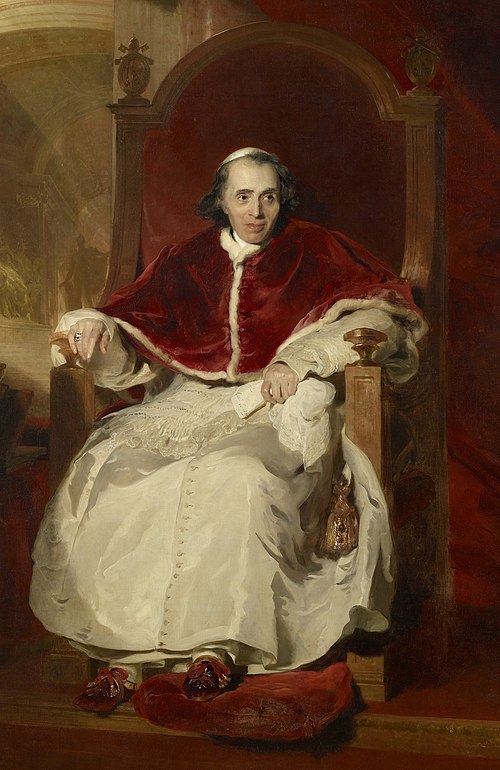
Image by Thomas Lawrence
20th August 🗓️ : Holiday - World Mosquito Day "World Mosquito Day, observed annually on 20 August, is a commemoration of British doctor Sir Ronald Ross's discovery in 1897 that female anopheline mosquitoes transmit malaria between humans. Prior to the discovery of the transmitting organism, vector, there were few means for controlling the spread..."

Image by Unknown authorUnknown author
0 notes
Photo


Herron Gymnasium - Van Voorhis Hall
High Street
Oxford, OH
Herron Gymnasium was a gymnasium and classroom building on the Miami University campus in Oxford, Ohio, later known as Van Voorhis Hall. The idea for a gymnasium first came about at an 1893 meeting of Miami University's Board of Trustees. John W. Herron, an 1845 Miami graduate and Cincinnati lawyer who served as president of Miami's Board of Trustees and eventually became the facility's namesake, served alongside two other men on a committee to plan the facility's construction. In February 1893, the school received $2,500 from the state to furnish the gymnasium. After planning throughout 1896, Miami finally built the gymnasium in 1897, naming it after Herron, who was so modest that he refused to have his name adorn the building; the building's exterior instead read "The Miami Gymnasium".
Herron was Miami University's first gymnasium. The building, a rectangular, two-story Romanesque revival-styled building with a truss roof, was constructed by F.E. Townsend, an architect selected by John Herron from nearby Hamilton. Herron Gymnasium consisted of two floors and a basement. The first floor held two classrooms and the chapels for the YWCA and YMCA, as well as offices, bathrooms, and dressing rooms. The gym took up the entire second floor, and had an elevated track. The first recorded game at Herron Gymnasium was a 1904 basketball game between the university team and some amateur players. In 1923, the building was moved 522 feet east to facilitate construction of Ogden Hall, a new dormitory. Its final site was near the present-day Roudebush Hall, along Oxford's High Street.
The gym was coeducational until 1931, and would serve as the main recreational center until 1932 when it became a women's gym due to the construction of Withrow Court, which was a male-only gym. After the change, students petitioned the Board of Trustees to rename the building Herron Hall, which they approved in June 1932. Except for an interlude during World War II when it served as a Navy barracks for the Navy Radio School that operated at Miami, it served as a women's gym until the construction in 1962 of a new women's recreational facility called "New Herron" which would later be renamed Phillips Hall in honor of Margaret Phillips, director of women's physical education at Miami for over 40 years.
The gym then became known as Van Voorhis Hall or Old Herron. The new namesake of this gym was Thomas Van Voorhis, Miami's longtime director of intramural sports. After 1962, the building’s use was diminished, and it served primarily as a venue for Miami's AFROTC program and men's intramural sports; it also held a yearly student art show. In the late 20th century, it was listed under its original name with the National Register of Historic Places on November 29, 1979, but was ordered to be demolished by an 8–1 vote from the Board of Trustees in 1986. The former gym was replaced with a parking lot near the current site of Roudebush Hall, the university's administration building.
Van Voorhis' daughter noted in a letter to the school that the gym, then Miami's oldest academic building "...stuck out like a sore thumb," and said her father would have wished to see it torn down. However, Sergio Sanabria, a Miami architecture professor, disagreed and called the push to demolish the building "irresponsible" as it was still structurally sound and the cost of renovation would have been comparatively inexpensive. Other faculty said that Herron served as an important part of Miami's identity as the coaching classes held there played a protracted role in developing the Cradle of Coaches at Miami.
0 notes
Text
(Part 2)
(Part 3)
Posted on July 8, 2022 by Douglas P. Marsh
"The strike was called November 9th, 1903. … The whole state of Colorado was in revolt.” – Mother Jones
It’s well known how, in 1905, the famous “Big” Bill Haywood helped found the Industrial Workers of the World in Chicago with Mother Jones, Lucy Parsons, Eugene V. Debs and others. Fewer know that Colorado – specifically the Colorado Labor Wars – was where Haywood and several other wobbly founders forged bonds of solidarity among miners and learned the pitfalls of business unionism. Or, that it’s where Haywood ran for governor, albeit from inside an Idaho jail cell.
And very few know that Colorado’s most successful strike took place under IWW leadership, during an overlooked surge in the union’s influence between 1927 and 1928.
Western Federation of Miners and the founding of the IWW
Approaching the turn of the 20th century, in the American West’s mining industry, big Capitalists were putting the squeeze on Labor and conditions were increasingly mean. Workers from Idaho, Montana and Colorado began organizing and, in 1893, would form the Western Federation of Miners.
WFM’s initial strikes took place in Colorado, with Cripple Creek’s first miner’s strike of 1894, and after that, in Leadville in 1896-1897. Haywood joined the WFM in 1896 as did another of IWW’s earliest members, Adolphus S. Embree, in 1899.
In Idaho, 1899, mine workers, armed and masked, hijacked a train and blew up mining equipment belonging to operators that refused to sign a WFM contract. The equipment was targeted because it was at the cutting edge in mining technology of the time and thus extremely expensive.
The event terrified bosses on both sides of the national border. At the time, Haywood was also in Idaho, while Embree was farther north in British Columbia, Canada, both mining precious metals. Idaho Governor Frank Steunenberg declared martial law, convincing President McKinley to deploy soldiers and detaining over a thousand men in a barn without trial.
By 1903, tensions would erupt into what is now remembered as the Colorado Labor War, where employers brought against workers the most systematic use of violence in U.S. labor history. In the face of brutal suppression, miners executed multiple coordinated direct actions in at least six mining towns throughout the state in 1903 and 1904.
Galvanized in these and other struggles in the region, radical factions within the WFM sent delegates to Chicago in June of 1905 to help found a new organization to compete with the American Federation of Labor in uniting workers from different industries.
The IWW was founded as AFL’s radical alternative – staunchly international and anti-capitalist – fiercely critical of the AFL’s privileging skilled labor and its tolerance of nativist sentiments.
Back in Idaho, Steunenberg was assassinated in a bombing outside his Caldwell residence in late December, 1905.
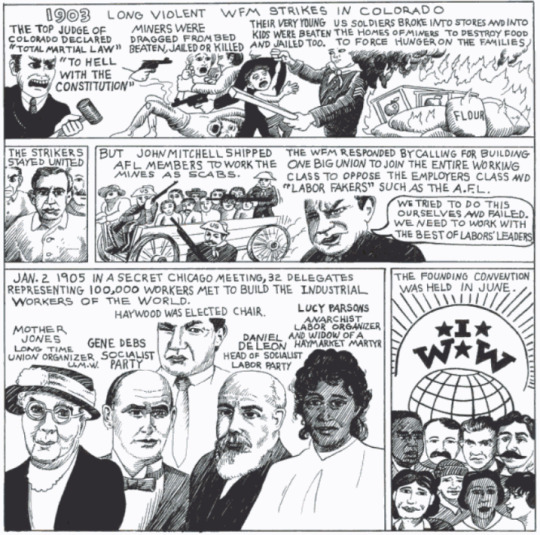
Colorado and the IWW’s early years
The IWW’s second convention, in 1906, began in open conflict and concluded in schism.
As with many revolutionary organizations, the IWW was internally divided from the outset. Many members drawn from the AFL brought the federation’s reformist tendencies, while WFM dual-carders (workers affiliated with two unions) included members with more conservative beliefs.
“The struggle for control of the organization formed the Second convention into two camps. The majority vote of the convention was in the revolutionary camp. … On the adjournment of the convention the old officials seized the general headquarters, and with the aid of detectives and police held the same, compelling the revolutionists to open up new offices,” – Vincent St. John
A few months after the convention, “Big” Bill Haywood was arrested in Denver at WMF headquarters and transported to Idaho, where he was accused of orchestrating the assassination of former governor Steunenberg. From his Boise jail cell, he won over 16,000 votes for governor of Colorado on the Socialist Party of Colorado ticket while designing WFM posters and reading Upton Sinclair’s “The Jungle”. By the end of 1907, the WFM would cut ties with IWW, Haywood would leave the WFM in 1908.

Dual-carding wobblies were likely involved in continuing labor disputes in Colorado, including the infamous Ludlow Massacre of 1914. The IWW had held free speech rallies in Denver in 1912 and 1913, and A.S. Embree was seen during the long strike (1910-1914) which preceded the massacre and other events of the Colorado Coal War.
In 1916, IWW leadership determined to wage a major campaign, authorizing “an appropriation of $2,000.00 be made for organizing the miners of California, Nevada, Arizona, Colorado, Montana, Utah, Idaho,” (Proceedings of the Tenth Convention of the Industrial Workers of the World. Chicago, 1916, page 61). Embree and another wobbly, Frank Little, were two of the external organizers sent to the field. They arrived to find the IWW forgotten to most miners and a united front among bosses and government agencies.
The Mountain West and the Fall of the IWW
“Guns, revolvers, machine guns came to Bisbee as they did to the front in France. ‘Shoot them back into the mines,’ said the bosses,”.
“Then on July 12th, 1,086 strikers and their sympathizers were herded at the point of guns into cattle cars in which cattle had recently been and which had not yet been cleaned out; they were herded into these box cars, especially made ready, and taken into the desert. Here they were left … without food or water to die,”- Mother Jones
The United States entered World War I in the spring of 1917. Early that summer, workers with IWW Local 800, fighting for better conditions in Arizona’s copper mines, were ready for action. A.S. Embree had been organizing miners operating out of Bisbee, with another IWW leader coordinating from Phoenix. Just before the strike, the Phoenix offices were moved to Salt Lake City, and Embree was cut off.
Though over 2,000 workers joined the Bisbee strike, a posse of even more assembled on behalf of the bosses and selected 1,200 deportees to load onto a train, later to be dumped in the desert over a hundred miles away. They were held in Columbus, New Mexico for over two months by federal troops who had been on the hunt for Mexican revolutionary Pancho Villa.
It was the largest deportation in U.S. labor history.
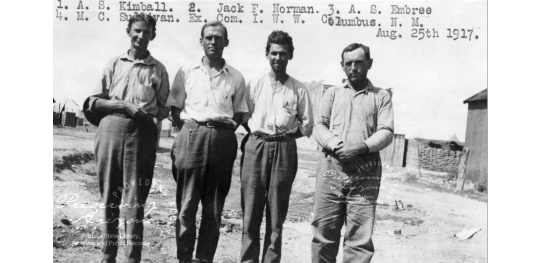
After release, A.S. Embree would travel north to copper mine strikes in Butte, Montana where IWW organizer Frank Little was lynched, on August 1, 1917. Little was the second of three early IWW martyrs along with Joe Hill, an IWW songwriter, organizer, and activist executed by firing squad in Utah, in 1915, and Wesley Everest, a former Serviceman and Lumberjack who was lynched by a mob while defending his union hall following the 1919 Seattle General Strike.
Embree had earned a reputation in subsequent strikes in and around Montana as IWW’s “ablest tactician” while also returning to Tucson, Arizona to face down incitement of riot charges over events at Bisbee. He was targeted by federal agents from 1917-1920 who provided evidence to prosecutors in Idaho, where he was sent to state prison from 1921 to 1924 on charges of, so-called, “criminal syndicalism.”
Disrupting the copper industry during war-time production led in part to the federal government’s overwhelming and devastating attacks on the IWW. These began on September 5, 1917, when state and local forces initiated raids against IWW offices, as well as private residences of the union’s leaders, all across the U.S.
In the end over 150 wobblies were arrested and charged under the then new Espionage Act. IWW co-founder Eugene V. Debs would be arrested in June of 1918 and sent to prison in April 1919 for speaking publicly against the war, “Big Bill” Haywood fled to Russia in 1921, where he would die seven years later at the age of 59.
329 notes
·
View notes
Text

𝗠𝗔𝗥𝗦𝗛𝗔𝗟𝗟 “𝗠𝗔𝗝𝗢𝗥” 𝗧𝗔𝗬𝗟𝗢𝗥 (1878-1932)
Marshall “Major” Taylor was a late 19th and early 20th century champion cyclist who became the first African American to win a world championship in sprint cycling. Between 1898 and 1899 he set numerous world records in cycling ranging from the quarter-mile to two-mile race.
Taylor was born on November 26, 1878 in Indianapolis, Indiana to Gilbert Taylor, a Civil War veteran and Saphronia Kelter Taylor. His parents migrated to Indianapolis from Louisville, Kentucky. His father worked as a carriage driver for a wealthy white family name the Southards in Indianapolis. Young Taylor accompanied father to work and became friends with the family son, Dan Southard.
In 1892, the Southards moved to Chicago, Illinois, leaving Taylor with a bicycle. Despite their move they soon recognized him as having a natural talent for riding a bicycle. By 1892 fourteen-year-old Taylor worked in an Indianapolis bicycle shop performing stunts for the customers He likely gained the nickname “Major” because he often wore a military uniform while doing his stunts.
Taylor won a number of races in Indianapolis and Chicago, Illinois by the time he was fifteen years old including his first significant cycling competition on June 30, 1895 when he became the only rider to finish a 75-mile road race near Indianapolis. On July 4, 1895 he won a ten-mile race in Indianapolis.
Because of the racism directed toward him in the Midwest, Taylor in 1895 moved to Worchester, Massachusetts, which was also the center of the U.S. bicycle industry. Taylor won amateur contests in Massachusetts, New Jersey, New York, and Connecticut before turning professional in 1896 at the age of 18 and becoming an overnight sensation. His first professional race too place on December 5, 1896 in front of 5,000 spectators at New York City’s Madison Square Garden. Despite his success and growing fame, many local promoters refused to allow Taylor to compete because of his race.
In 1897 and 1898 because Taylor was not allowed to compete because of racial discrimination, he was prevented from winning the American sprint championships. However, in 1899, after setting a number of world records, Taylor won the World Sprint Championship in Montreal, Quebec, Canada. This achievement made him only the second black athlete to hold a title in any sport. (The first was bantamweight boxer George Dixon, who won the title fights in 1890-91).
In 1901, Taylor had an exceptional European tour, where he defeated every European champion who challenged him. He raced for five seasons in Paris, France and two seasons in Australia. Retiring from racing in 1910 and settling in Worcester, Massachusetts, Taylor was characterized as “the fastest bicycle rider in the world.”
Taylor was married to Daisy Victoria Morris in 1902. The couple had one daughter, Rita Sidney, before separating in 1930. Little is known about Taylor after the separation and his move to Chicago.
Marshall W. Taylor died on June 21, 1932 in Chicago, Illinois at Cook County Hospital. He was 53 at the time of his death, impoverished and was buried in an unmarked grave. In 1948, a group of pro bike racers with money donated by Frank Schwinn of the Schwinn Bicycle Co. had his remains exhumed and reburied at Mount Glenwood Cemetery in Glenwood, Illinois.
During the 1980s, Taylor was inducted into the United States Bicycling Hall of Fame. The city of Indianapolis also built the Major Taylor Velodrome name after him and he was awarded the Korbal Lifetime Achievement Award by USA Cycling. The city of Worcester, Massachusetts created a statue outside the city library.

#kemetic dreams#african#afrakan#fitness#afrakans#brownskin#africans#marshall major taylor#cyclist#bicycle#cycling#bike#cycle#bicycling
159 notes
·
View notes
Text
Possible D Gray Man timeline
So as many DGM fans know, there is no direct timeline known for D Gray Man. And with what we know, DGM may not even take place in the time period its set to be in. But- one tumblr user (I forgot who they were- I am so sorry) suggested that in chapter 220, it looked like Katerina’s clothes were from the 1870′s, but that would skew the whole timeline of when DGM is said to take place. After a person on one of the DGM Discord servers (vergelapada) asked what year the Earl may have split, I did a little fashion research and discovered Katerina’s clothes would have most likely been from the 1840′s. And given how most Victorian era media takes place in 1895 and D Gray Man is said to be “an alternate late 19th century”, I think I have a clearer idea of what years everything might have taken place. I may be off by a year, but now that you know the method to my madness, let’s dive in.
Aprox. 5115 BCE (if DGM takes place in the 1800′s)- The first 3 days of darkness occurs, and the Pillar destroys the world as well as the Noah becoming born.
Approx. 1395- Lala is made a doll
Approx. 1795- After “discovering” Innocence, the Black Order is founded. Heveslaska is made the keeper of loose innocence by her family, the Lvellie family
1807- Bookman is born (Aug 5th)
1843 or 1844- Mana and Nea are “born”
Late 1840′s- Mana is sick for a month, yet recovers
1860 and/or 1861- Nea destroys the previous Noah family and Mana becomes the Earl, thus destroying Nea in the process. Past!Allen agrees to become his host.
1861 or 1862- Sheril Kamelot is possibly born (Jan 20th)
1866- The original Kanda and Alma are destroyed by Akuma. Komui born June 13th
1867- Arystar Krory III is born
1869- Tyki Mikk is possibly born (Dec 25th)
1870- Miranda Lotto is born (Jan 1)
1877- Lavi is possibly born (Aug 10)
1879- Lenalee is also born (Feb 20th)
1880- “Allen Walker” was “born” (?)
1883- Lavi becomes Bookman’s Apprentice
Approx. 1885- Mana reawakens and becomes a clown to look for his brother Nea. He meets a 6-year-old Allen aka Red on Christmas Eve and adopts him the next day. This was also the year Lenalee was taken away from Komui to the Order
1886- Alma Karma is “born” (Dec 6th)
1887- Yuu Kanda is born (June 6th)
Later in 1887- Komui becomes head of the European Branch Order and both Kanda and Lenalee become friends
1888 or 1889- Cross takes in Allen and begins training him
1892- Skin Boric awakens as a Noah
1893- Lavi joins the Order
1895- Allen becomes an exorcist and the story begins
1896 or 1897- Allen runs away from the order as the 14th aka Nea begins to take over his body
Note: I added a couple character birthdays I thought might be useful or worth mentioning on the timelines because A- they were important to the story and B- because they may be important for theories or coming up with a better timeline. Hope this was useful to someone. I spent all morning on this. If there is anything I need to add or change, please let me know nicely. Thank you.
#d gray man#dgm#I think I forgot a lot of things- but this was the best I could come up with#dgm timeline#dgm allen#dgm kanda#dgm lenalee#dgm komui
116 notes
·
View notes
Text
Some excerpts from The Lone Wanderer by Tatyana Grigoryeva, 1967
This book contains an essay on life and literary activity of Japanese writer Kunikida Doppo. In addition to it, one can get some new intrresting information about the literary tendencies of the end of the 19th - beginning of the 20th century.
It is my own translation from Russian. English is not my first language, so I'm sorry in advance for all the misspellings and strange-looking grammatical constructions if there are any. Please, enjoy:)
...Doppo's appearance is preserved in his diary. In 1891, a passionate, eager and full of hope young man is building his character; composure, courage, persistence – are his ideals. He approaches life consciously, greedily pounces on the first book he gets in his hands, be it a political or economic treatise or fiction. He reads Byron and (Thomas Babington) Macaulay with equal zeal. He enthusiastically undertakes the organization of a revolt against the appointment of a new director, which goes against the wishes of the students. The school still remembered the words of Azusa Ono, a leader of the "freedom and people's rights" movement, which were said by him at the opening ceremony of the school, "The independence of a country is based on the independence of the people; the independence of the people is rooted in the independence of their spirit. The spiritual independence of the people is actually determined by the independence of science ..."
Nevertheless, the strike failed. The rebel was expelled. With broken hopes and incompleted education, he went to his parents in the village. In a neighboring village, he started teaching literature, mathematics and English. He was teaching children in his own way, instilling a love of freedom in them.
But Doppo hadn't been teaching for a long time. His father had changed his workplace again, and in June 1892 Doppo together with his younger brother Shuji, whom he treated with touching tenderness and with whom he was rarely separated, went to Tokyo. With his father's money, he begins publishing the magazine Literature for Youth ("Seinen bungaku", 青年文學) However, he had to abandon this idea soon. His father was fired, and the aspiring publisher was left without any funds. From February 1893, Doppo started keeping a diary, which he called Candid Notes ("Azamukazaru no ki", 欺かざるの記). The subtitle says – "thoughts, feelings, facts". We can learn from this diary what did the writer live by, what worried him. On February 3, 1893, Doppo started the first page and on May 18, 1897, he finished the last one. Here are four years of doubts and disappointments, the collapse of previous ideas and the birth of new views on the world, society, and human life.
The melancholic tone of the diary reflected the melancholic mood of the author. From the very first lines, there is a breath of sadness. Doppo was only twenty-two, and such a discouragement already! Or could it be because he was twenty-two? The dreams inspired by his youth, the ones gleaned from the books, had left him one after another. There is no longer an enthusiastic youth in front of us, but a man overcome with doubts.
This diary is interesting both as a confession of person and as a document of the century. The personality of the writer is the key to the era he lived in. A generation is visible in the personality.
It took him several years of painful reflection to make a choice, to determine his own path.
It is February, 1893. Doppo received the news: his father was fired. There his job search began. He felt depressed. Melancholic. Frustrated. Despairing, sometimes. The ideals in which he managed to believe, the ideals of "love, truth and work", were not confirmed. But he had no right to doubt, he had to give the salvation to all the people, make them free them from their suffering. Like Hamlet, he felt great responsibility for what was happening around him, and he was ready to accept the same fate:
The century has been shattered — and the worst of all
Is the fact that I was born to restore it.
But how? How could he give the freedom to people? Maybe through a political struggle?
"Thinking about the meaning of politics, I came to the conclusion that politics contains almost all public affairs. It is not only politics in the narrow sense of the word, it is also religion, education, and literature... If human is a social animal, then a political one, too..."
With a heavy heart, Doppo was accepting his parents' help, despite the fact that they were barely scraping by themselves. In his diary he wrote, "I was brought up by my parents and circumstances. My parents are praying for my success and expect it from me. As for me, I'm not afraid of hunger at all, but my mother and father should not starve. I will pull myself together, end up my moping and find my own place in life. I have no right to upset my parents"...
To be continued, I believe!
9 notes
·
View notes
Text
A brown moth fluttered.
The curtain was down, and the carpenters were rearranging the “No, no, no! I can’t breathe 1 volatile I can’t breathe.” And such a fit of suffocating 2 “I can’t breathe,” she would sometimes say 3 and the minisnever! I can’t breathe it in fast enough, nor hard enough, nor long enough.” 4 and started up up. to return to the tent, only to check him No, I can’t breathe the same air self in the act as often as he started, with ye to-night, but ye’ll go into the he lost consciousness in uneasy dreams 5 meet me at the station. I can’t breathe in this wretched 6 “sickening down there — I can’t breathe! I can’t stand it, Drewe! It’s killing me!” — Tears 7 struggling to altitudes that I can’t breathe in. I could help him when he was in despair, but he is the sort who 8 sometimes I find I can’t breathe in it. Perhaps some folks will say “so much the worse for you” 9 it seems if I can’t breathe in the house. not dared hope 10 “Well, I won’t wear ’em. I can’t breathe” “Sure! Blame ’em!” “I can’t breathe a square breath.” Oh 11 things I regret I can’t breathe. 12 bramble bush. I can’t breathe. I can’t eat. I can’t do anything much. It’s clear to my knees. 13 I can't breathe, I can't talk, 14 lying on its “I can’t stay here I can’t breathe” side, the cork half-loosened. A brown moth fluttered. 15 “I can’t breathe beside you.” 16 the needs of any reasonable young lady. “I can't breathe there, 17 I can’t breathe — I really need the rush of this wintry air to restore me!” 18 I can’t breathe no more in that coop upstairs . tablet ; two he said is what you need.” of flame shoots through a stream of oil 19 no friction. It’s friction—rub- / asthmatically.] “I can’t breathe deep — I can light and of reason. But I’ve a notion 20 out of it. I can’t breathe in the dark. I can’t. I / She withdrew 21 “I can’t breathe or feel in” 22 Up a flight of stairs, and there was the girl, sitting on the edge of an untidy bed. The yellow sweater was on the floor. She had on an underskirt and a pink satin camisole. “I can't breathe !” she gasped. 23 I can’t breathe in the dark! I can’t! I can’t! I can’t live in the dark with my eyes open! 24 One never gets it back! How could one! And I can’t breathe just now, on account of 25 that old stuff, I could shriek. I can’t breathe in the same room with you. The very sound of 26 don’t! I can’t — breathe.... I’m all — and bitter howling. 27
sources (pre-1923; approximately 90 in all, from which these 27 passages, all by women)
1 ex “Her Last Appearance,” in Peters’ Musical Monthly, And United States Musical Review 3:2 (New-York, February 1869), “from Belgravia” : 49-52 (51) “Her Last Appearance” appeared later, “by the author of Lady Audley’s Secret” (M.E. Braddon, 1835-1915 *), in Belgravia Annual (vol. 31; Christmas 1876) : 61-73 2 snippet view ex The Lady’s Friend (1873) : 15 evidently Frances Hodgson Burnett (1849-1924 *) her Vagabondia : A Love Story (New York, 1891) : 286 (Boston, 1884) : 286 (hathitrust) 3 ex “The Story of Valentine; and his Brother.” Part VI. Blackwood’s Edinburgh Magazine vol. 115 (June 1874) : 713-735 (715) authored by Mrs. [Margaret] Oliphant (1828-97 *), see her The Story of Valentine (1875; Stereotype edition, Edinburgh and London, 1876) : 144 4 OCR confusions at Olive A. Wadsworth, “Little Pilkins,” in Sunday Afternoon : A Monthly Magazine for the Household vol. 2 (July-December 1878) : 73-81 (74) OAW “Only A Woman” was a pseudonym of Katharine Floyd Dana (1835-1886), see spoonercentral. Katharine Floyd Dana also authored Our Phil and Other Stories (Boston and New York, 1889) : here, about which, a passage from a bookseller's description — Posthumously published fictional sketches of “negro character,” first published in the Atlantic Monthly under the pseudonym Olive A. Wadsworth. The title story paints a picture of plantation life Dana experienced growing up on her family’s estate in Mastic, Long Island. Although a work of fiction set in Maryland, the character of Phil may of been named for a slave once jointly owned by the Floyds and a neighboring family. source see also the William Buck and Katherine Floyd Dana collection, 1666-1912, 1843-1910, New York State Historical Documents (researchworks). 5 OCR cross-column misread, at M(ary). H(artwell). Catherwood (1847-1902 *), “The Primitive Couple,” in Lippincott’s Magazine of Popular Literature and Science 36 (August 1885) : 138-146 (145) author of historical romances, short stories and poetry, and dubbed the “Parkman of the West,” her papers are at the Newberry Library (Chicago) 6 ex Marie Corelli (Mary Mackay; 1855-1924 *), Thelma, A Norwegian Princess: A Novel, Book II. The Land of Mockery. Chapter 12 (New Edition, London, 1888) : 432 7 preview snippet (only), at Ada Cambridge (1844-1926 *), Fidelis, a Novel ( “Cheap Edition for the Colonies and India,” 1895) : 289 full scan, (New York, 1895) : 261 born and raised in England, spent much of her life in Australia (died in Melbourne); see biography (and 119 of her poems) at the Australia Poetry Library in particular, the striking poems from Unspoken Thoughts (1887) here (Thomas Hardy comes to mind) 8 snippet view (only) at F(rances). F(rederica), Montrésor (1862-1934), At the Cross-Roads (London, 1897) : 297 but same page (and scan of entirety) at hathitrust see her entry At the Circulating Library (Database of Victorian Fiction 1837-1901) an interesting family. Montrésor’s The Alien: A Story of Middle Age (1901) is dedicated to her sister, C(harlotte). A(nnetta). Phelips (1858-1925), who was devoted to work for the blind. See entry in The Beacon, A Monthly magazine devoted to the interests of the blind (May 1925) a great-granddaughter of John Montresor (1737-99), a British military engineer and cartographer, whose colorful (and unconventional) life is sketched at wikipedia. 9 Alice H. Putnam, “An Open Letter,” in Kindergarten Review 9:5 (Springfield, Massachusetts; January 1899) : 325-326 Alice Putnam (1841-1919) opened the first private kindergarten in Chicago; Froebel principles... (wikipedia); see also “In Memory of Alice H. Putnam” in The Kindergarten-primary Magazine 31:7 (March 1919) : 187 (hathitrust) 10 OCR cross-column misread, at Mabel Nelson Thurston (1869?-1965?), “The Palmer Name,” in The Congregationalist and Christian World 86:30 (27 July 1901) : 134-135 author of religiously inflected books (seven titles at LC); first female admitted for entry at George Washington University (in 1888). GWU archives 11 OCR cross-column misread, at Margaret Grant, “The Romance of Kit Dunlop,” Beauty and Health : Woman’s Physical Development 7:6 (March 1904): 494-501 (499 and 500) the episodic story starts at 6:8 (November 1903) : 342 12 ex Marie van Vorst (1867-1936), “Amanda of the Mill,” The Bookman : An illustrated magazine of literature and life 21 (April 1905) : 190-209 (191) “writer, researcher, painter, and volunteer nurse during World War I.” wikipedia 13 ex Maude Morrison Huey, “A Change of Heart,” in The Interior (The sword of the spirit which is the Word of God) 36 (Chicago, April 20, 1905) : 482-484 (483) little information on Huey, who is however mentioned in Paula Bernat Bennett, her Poets in the Public Sphere : The Emancipatory Project of American Women's Poetry, 1800-1900 (2003) : 190 14 ex Leila Burton Wells, “The Lesser Stain,” The Smart Set, A Magazine of Cleverness 19:3 (July 1906) : 145-154 (150) aside — set in the Philippines, where “The natives were silent, stolid, and uncompromising.” little information on Wells, some of whose stories found their way to the movie screen (see IMDB) The Smart Set ran from March 1900-June 1930; interesting story (and decline): wikipedia 15 OCR cross-column misread, at Josephine Daskam Bacon (1876-1961 *), “The Hut in the Wood: A Tale of the Bee Woman and the Artist,” in Collier’s, The National Weekly 41:12 (Saturday, June 13, 1908) : 12-14 16 ex E. H. Young, A Corn of Wheat (1910) : 90 Emily Hilda Daniell (1880-1949), novelist, children’s writer, mountaineer, suffragist... wrote under the pseudonym E. H. Young. (wikipedia) 17 ex Mary Heaton Vorse (1874-1966), “The Engagements of Jane,” in Woman’s Home Companion (May 1912) : 17-18, 92-93 Illustrated by Florence Scovel Shinn (1871-1940, artist and book illustrator who became a New Thought spiritual teacher and metaphysical writer in her middle years. (wikipedia)) Mary Heaton Vorse — journalist, labor activist, social critic, and novelist. “She was outspoken and active in peace and social justice causes, such as women's suffrage, civil rights, pacifism (such as opposition to World War I), socialism, child labor, infant mortality, labor disputes, and affordable housing.” (wikipedia). 18 ex snippet view, at “Voices,” by Runa, translated for the Companion by W. W. K., in Lutheran Companion 20:3 (Rock Island, Illinois; Saturday, January 20, 1912) : 8 full view at hathitrust same passage in separate publication as Voices, By Runa (pseud. of E. M. Beskow), from the Swedish by A. W. Kjellstrand (Rock Island, Illinois, 1912) : 292 E(lsa). M(aartman). Beskow (1874-1953), Swedish author and illustrator of children’s books (Voices seems rather for older children); see wikipedia 19 ex Fannie Hurst (1885-1968 *), “The Good Provider,” in The Saturday Evening Post 187:1 (August 15, 1914) : 12-16, 34-35 20 OCR cross-column misread, at Anne O’Hagan, “Gospels of Hope for Women: A few new creeds, all of them modish—but expensive” in Vanity Fair (February 1915) : 32 Anne O’Hagan Shinn (1869-1933) — feminist, suffragist, journalist, and writer of short stories... “known for her writings detailing the exploitation of young women working as shop clerks in early 20th Century America... O’Hagan participated in several collaborative fiction projects...” (wikipedia) a mention of St. Anselm, whose “sittings” are free, vis-à-vis “Swami Bunkohkahnanda”... “Universal Harmonic Vibrations”... 21 OCR cross-column misread (three columns), at Fannie Hurst (1885-1968 *), “White Goods” (Illustrations by May Wilson Preston) in Metropolitan Magazine 42:3 (July 1915) : 19-22, 53 repeated, different source and without OCR misread, at 24 below 22 ex Mary Patricia Willcocks, The Sleeping Partner (London, 1919) : 47 (snippet only) full at hathitrust see onlinebooks for this and other of her titles. something on Mary Patricia Willcocks (1869-1952) at ivybridge-heritage. in its tone and syntax, her prose brings Iris Murdoch to mind. 23 Katharine Wendell Pedersen, “Clingstones, A week in a California cannery.” in New Outlook vol. 124 (February 4, 1920) : 193-194 no information about the author. the journal began life as The Christian Union (1870-1893) and continued under the new title into 1928; it ceased publication in 1935; it was devoted to social and political issues, and was against Bolshevism (wikipedia) 24 ex Fannie Hurst (1885-1968 *), “White Goods,” in her Humoresque : A Laugh on Life with a Tear Behind it (1919, 1920) : 126-169 (155) 25 ex snippet view, at Letters and poems of Queen Elisabeth (Carmen Sylva), with an introduction and notes by Henry Howard Harper. Volume 2 (of 2; Boston, Printed for members only, The Bibliophile society, 1920) : 51 (hathitrust) Carmen Sylva was “the pen name of Elisabeth, queen consort of Charles I, king of Rumania” (1843-1916 *) 26 OCR cross-column misread, at Ruth Comfort Mitchell, “Corduroy” (Part Three; Illustrated by Frederick Anderson), in Woman’s Home Companion 49:8 (August 1922) : 21-23, 96-97 (hathitrust) Ruth Comfort Mitchell Young (1882-1954), poet, dramatist, etc., and owner of a remarkable house (in a “Chinese” style) in Los Gatos, California (wikipedia) 27 Helen Otis, “The Christmas Waits,” in Woman’s Home Companion 49:12 (Christmas 1922) : 36 probably Helen Otis Lamont (1897-1993), about whom little is found, save this “Alumna Interview: Helen Otis Lamont, Class of 1916” (Packer Collegiate Institute, Brooklyn, 1988) at archive.org (Brooklyn Historical Society)
—
prompted by : recent thoughts about respiration (marshes, etc.); Pfizer round-one recovery focus on the shape of one breath, then another; inhalation, exhalation and the pleasure of breathing; and for whom last breaths are no pleasure (far from it); last breaths (Robert Seelthaler The Field (2021) in the background).
1 of n
all tagged breath all tagged cento
15 notes
·
View notes
Photo
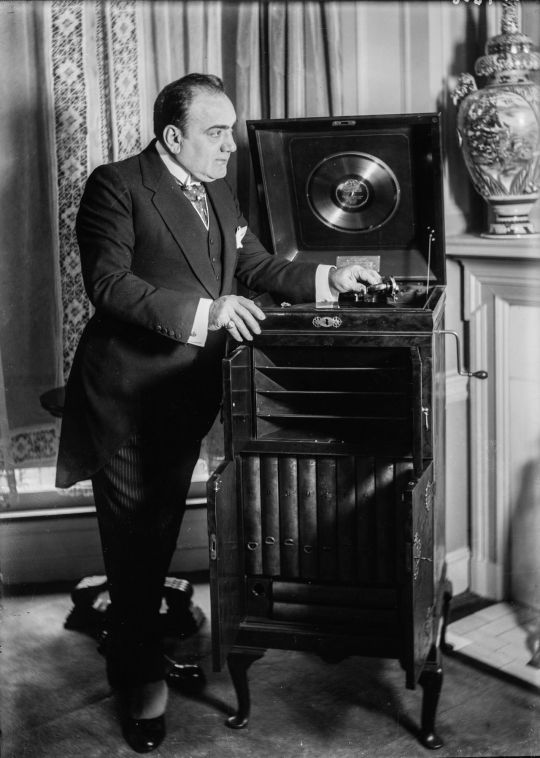
Enrico Caruso was born on February 25, 1873. He was an Italian operatic tenor. He sang to great acclaim at the major opera houses of Europe and the Americas, appearing in a wide variety of roles (74) from the Italian and French repertoires that ranged from the lyric to the dramatic. One of the first major singing talents to be commercially recorded, Caruso made 247 commercially released recordings from 1902 to 1920, which made him an international popular entertainment star.
Caruso's 25-year career, stretching from 1895 to 1920, included 863 appearances at the New York Metropolitan Opera before he died at the age of 48. Thanks in part to his tremendously popular phonograph records, Caruso was one of the most famous personalities of his day, and his fame has endured to the present. He was one of the first examples of a global media celebrity. Beyond records, Caruso's name became familiar to millions through newspapers, books, magazines, and the new media technology of the 20th century: cinema, the telephone and telegraph.
Caruso toured widely both with the Metropolitan Opera touring company and on his own, giving hundreds of performances throughout Europe, and North and South America. He was a client of the noted promoter Edward Bernays, during the latter's tenure as a press agent in the United States. Beverly Sills noted in an interview: "I was able to do it with television and radio and media and all kinds of assists. The popularity that Caruso enjoyed without any of this technological assistance is astonishing."
Caruso biographers Pierre Key, Bruno Zirato and Stanley Jackson attribute Caruso's fame not only to his voice and musicianship but also to a keen business sense and an enthusiastic embrace of commercial sound recording, then in its infancy. Many opera singers of Caruso's time rejected the phonograph (or gramophone) owing to the low fidelity of early discs. Others, including Adelina Patti, Francesco Tamagno and Nellie Melba, exploited the new technology once they became aware of the financial returns that Caruso was reaping from his initial recording sessions.
Caruso made more than 260 extant recordings in America for the Victor Talking Machine Company (later RCA Victor) from 1904 to 1920, and he and his heirs earned millions of dollars in royalties from the retail sales of these records. He was also heard live from the stage of the Metropolitan Opera House in 1910, when he participated in the first public radio broadcast to be transmitted in the United States.
Caruso also appeared in two motion pictures. In 1918, he played a dual role in the American silent film My Cousin for Paramount Pictures. This film included a sequence depicting him on stage performing the aria Vesti la giubba from Leoncavallo's opera Pagliacci. The following year Caruso played a character called Cosimo in another film, The Splendid Romance. Producer Jesse Lasky paid Caruso $100,000 each to appear in these two efforts but My Cousin flopped at the box office, and The Splendid Romance was apparently never released. Brief candid glimpses of Caruso offstage have been preserved in contemporary newsreel footage.
While Caruso sang at such venues as La Scala in Milan, the Royal Opera House, in London, the Mariinsky Theatre in Saint Petersburg, and the Teatro Colón in Buenos Aires, he appeared most often at the Metropolitan Opera in New York City, where he was the leading tenor for 18 consecutive seasons. It was at the Met, in 1910, that he created the role of Dick Johnson in Giacomo Puccini's La fanciulla del West.
Caruso's voice extended up to high D-flat in its prime and grew in power and weight as he grew older. At times, his voice took on a dark, almost baritonal coloration. He sang a broad spectrum of roles, ranging from lyric, to spinto, to dramatic parts, in the Italian and French repertoires. In the German repertoire, Caruso sang only two roles, Assad (in Karl Goldmark's The Queen of Sheba) and Richard Wagner's Lohengrin, both of which he performed in Italian in Buenos Aires in 1899 and 1901, respectively.
Repertoire
Caruso's operatic repertoire consisted primarily of Italian works along with a few roles in French. He also performed two German operas, Wagner's Lohengrin and Goldmark's Die Königin von Saba, singing in Italian, early in his career. Below are the first performances by Caruso, in chronological order, of each of the operas that he undertook on the stage.
World premieres are indicated with **.
L'amico Francesco (Morelli) – Teatro Nuovo, Napoli, 15 March 1895 (debut)**
Faust – Caserta, 28 March 1895
Cavalleria rusticana – Caserta, April 1895
Camoens (Musoni) – Caserta, May 1895
Rigoletto – Napoli, 21 July 1895
La traviata – Napoli, 25 August 1895
Lucia di Lammermoor – Cairo, 30 October 1895
La Gioconda – Cairo, 9 November 1895
Manon Lescaut – Cairo, 15 November 1895
I Capuleti e i Montecchi – Napoli, 7 December 1895
Malia (Francesco Paolo Frontini) – Trapani, 21 March 1896
La sonnambula – Trapani, 25 March 1896
Mariedda (Gianni Bucceri [it]) – Napoli, 23 June 1896
I puritani – Salerno, 10 September 1896
La Favorita – Salerno, 22 November 1896
A San Francisco (Sebastiani) – Salerno, 23 November 1896
Carmen – Salerno, 6 December 1896
Un Dramma in vendemmia (Fornari) – Napoli, 1 February 1897
Celeste (Marengo) – Napoli, 6 March 1897**
Il Profeta Velato (Napolitano) – Salerno, 8 April 1897
La bohème – Livorno, 14 August 1897
La Navarrese – Milano, 3 November 1897
Il Voto (Giordano) – Milano, 10 November 1897**
L'arlesiana – Milano, 27 November 1897**
Pagliacci – Milano, 31 December 1897
La bohème (Leoncavallo) – Genova, 20 January 1898
The Pearl Fishers – Genova, 3 February 1898
Hedda (Leborne) – Milano, 2 April 1898**
Mefistofele – Fiume, 4 March 1898
Sapho (Massenet) – Trento, 3 June (?) 1898
Fedora – Milano, 17 November 1898**
Iris – Buenos Aires, 22 June 1899
La regina di Saba (Goldmark) – Buenos Aires, 4 July 1899
Yupanki (Berutti)– Buenos Aires, 25 July 1899**
Aida – St. Petersburg, 3 January 1900
Un ballo in maschera – St. Petersburg, 11 January 1900
Maria di Rohan – St. Petersburg, 2 March 1900
Manon – Buenos Aires, 28 July 1900
Tosca – Treviso, 23 October 1900
Le maschere (Mascagni) – Milano, 17 January 1901**
L'elisir d'amore – Milano, 17 February 1901
Lohengrin – Buenos Aires, 7 July 1901
Germania – Milano, 11 March 1902**
Don Giovanni – London, 19 July 1902
Adriana Lecouvreur – Milano, 6 November 1902**
Lucrezia Borgia – Lisbon, 10 March 1903
Les Huguenots – New York, 3 February 1905
Martha – New York, 9 February 1906
Madama Butterfly – London, 26 May 1906
L'Africana – New York, 11 January 1907
Andrea Chénier – London, 20 July 1907
Il trovatore – New York, 26 February 1908
Armide – New York, 14 November 1910
La fanciulla del West – New York, 10 December 1910**
Julien – New York, 26 December 1914
Samson et Dalila – New York, 24 November 1916
Lodoletta – Buenos Aires, 29 July 1917
Le prophète – New York, 7 February 1918
L'amore dei tre re – New York, 14 March 1918
La forza del destino – New York, 15 November 1918
La Juive – New York, 22 November 1919
Caruso also had a repertory of more than 500 songs. They ranged from classical compositions to traditional Italian melodies and popular tunes of the day, including a few English-language titles such as George M. Cohan's "Over There", Henry Geehl's "For You Alone" and Arthur Sullivan's "The Lost Chord".
On 16 September 1920, Caruso concluded three days of recording sessions at Victor's Trinity Church studio in Camden, New Jersey. He recorded several discs, including the Domine Deus and Crucifixus from the Petite messe solennelle by Rossini. These recordings were to be his last.
Dorothy Caruso noted that her husband's health began a distinct downward spiral in late 1920 after he returned from a lengthy North American concert tour. In his biography, Enrico Caruso Jr. points to an on-stage injury suffered by Caruso as the possible trigger of his fatal illness. A falling pillar in Samson and Delilah on 3 December had hit him on the back, over the left kidney (and not on the chest as popularly reported). A few days before a performance of Pagliacci at the Met (Pierre Key says it was 4 December, the day after the Samson and Delilah injury) he suffered a chill and developed a cough and a "dull pain in his side". It appeared to be a severe episode of bronchitis. Caruso's physician, Philip Horowitz, who usually treated him for migraine headaches with a kind of primitive TENS unit, diagnosed "intercostal neuralgia" and pronounced him fit to appear on stage, although the pain continued to hinder his voice production and movements.
During a performance of L'elisir d'amore by Donizetti at the Brooklyn Academy of Music on December 11, 1920, he suffered a throat haemorrhage and the performance was canceled at the end of Act 1. Following this incident, a clearly unwell Caruso gave only three more performances at the Met, the final one being as Eléazar in Halévy's La Juive, on 24 December 1920. By Christmas Day, the pain in his side was so excruciating that he was screaming. Dorothy summoned the hotel physician, who gave Caruso some morphine and codeine and called in another doctor, Evan M. Evans. Evans brought in three other doctors and Caruso finally received a correct diagnosis: purulent pleurisy and empyema.
Caruso's health deteriorated further during the new year, lapsing into a coma and nearly dying of heart failure at one point. He experienced episodes of intense pain because of the infection and underwent seven surgical procedures to drain fluid from his chest and lungs. He slowly began to improve and he returned to Naples in May 1921 to recuperate from the most serious of the operations, during which part of a rib had been removed. According to Dorothy Caruso, he seemed to be recovering, but allowed himself to be examined by an unhygienic local doctor, and his condition worsened dramatically after that. The Bastianelli brothers, eminent medical practitioners with a clinic in Rome, recommended that his left kidney be removed. He was on his way to Rome to see them but, while staying overnight in the Vesuvio Hotel in Naples, he took an alarming turn for the worse and was given morphine to help him sleep.
Caruso died at the hotel shortly after 9:00 a.m. local time, on 2 August 1921. He was 48. The Bastianellis attributed the likely cause of death to peritonitis arising from a burst subphrenic abscess. The King of Italy, Victor Emmanuel III, opened the Royal Basilica of the Church of San Francesco di Paola for Caruso's funeral, which was attended by thousands of people. His embalmed body was preserved in a glass sarcophagus at Del Pianto Cemetery in Naples for mourners to view. In 1929, Dorothy Caruso had his remains sealed permanently in an ornate stone tomb.
Daily inspiration. Discover more photos at http://justforbooks.tumblr.com
19 notes
·
View notes
Text

Esther Ralston (born Esther Louise Worth, September 17, 1902 – January 14, 1994) was an American film actress who was popular in the silent era.
Ralston was born Esther Louise Worth in Bar Harbor, Maine, one of five siblings. She was the older sister of actor Howard Ralston (July 25, 1904 – June 1, 1992), who appeared in nine films between 1920 and 1924.
She began her career as a child actress in a family vaudeville act which was billed as "The Ralston Family with Baby Esther, America's Youngest Juliet". From this, she appeared in a few small silent film roles, including a role alongside her brother in the 1920 film adaptation of Huckleberry Finn. Ralston later gained attention as Mrs. Darling in the 1924 film version of Peter Pan.
In the late 1920s, she appeared in many films for Paramount, at one point earning as much as $8,000 per week, and garnering much popularity, especially in United Kingdom. She appeared mainly in comedies, often portraying spirited society girls, but received good reviews for her forays into dramatic roles.
On radio, Ralston portrayed Kathy Marsh in Portia Faces Life and Marcella Hudnall in Our Gal Sunday.
Despite making a successful transition to sound films, she mainly was relegated to supporting roles by the mid-1930s. Her last leading role was in To the Last Man in 1933, directed by Henry Hathaway and starring Randolph Scott. Ralston made her final film Tin Pan Alley in 1940 and chose to retire from films. She continued working on the stage and in radio throughout the 1940s, including being the leading lady for part of the run of Woman of Courage.
She returned to the screen in the early 1950s with guest roles on television series, including Kraft Television Theatre and Tales of Tomorrow. In 1962, she had a leading role in the short-lived daytime drama Our Five Daughters, her final onscreen role. In 1985, Ralston released her autobiography Some Day We'll Laugh.
On December 25, 1925, Ralston married her manager, the actor George Webb Frey (1897–1943) in Manhattan, New York. He was credited in films as George Webb. They had a daughter, Mary Esther (born 1931), who, at birth was known as the "$100,000 Baby" because her mother turned down a substantial film contract while pregnant. George and Esther divorced in 1934. George filed for bankruptcy in Los Angeles in March 1934. On June 16, 1935, Ralston married actor Will Morgan (Wilburt Whitfield Morgan), then a former New York stage actor and singer. They divorced in 1938. Morgan led the saxophone section for eight years for Fred Waring.
On August 6, 1939, Ralston married radio announcer and columnist Ted Lloyd (Theodore Allen Lloyd; 1915–1961) in Greenwich, Connecticut. Music publisher Jack Robbins (John Jacob Robbins; 1894–1959) was Lloyd's best man. The couple had two children, Judy (born 1942) and Ted, Jr. (born 1943). Ted and Esther divorced in 1954. Before marrying Ralston, Lloyd had worked for newspapers and Radio News. In 1942, Lloyd became director of radio for 20th Century Fox. In 1946, with Hal Horne and Armand Deutsch, Lloyd formed Ted Lloyd, Inc. to manage personalities and to produce radio (later TV) programs. He produced several radio dramas, including My True Story for the NBC Red Network, Adventures of the Abbotts on NBC Red Network (18 episodes in 1955), Whispering Streets for CBS Radio, and Escape for CBS-TV.
On January 14, 1994, Ralston died of a heart attack at age 91 in her home in Ventura, California. The family held services on January 17, 1994 in Ventura, California, the day of the Northridge earthquake.
For her contribution to the motion picture industry, Esther Ralston has a star on the Hollywood Walk of Fame at 6664 Hollywood Boulevard.
#esther ralston#silent era#silent hollywood#silent movie stars#classic hollywood#classic movie stars#golden age of hollywood#old hollywood#1910s movies#1920s hollywood#1930s hollywood#1940s hollywood
8 notes
·
View notes